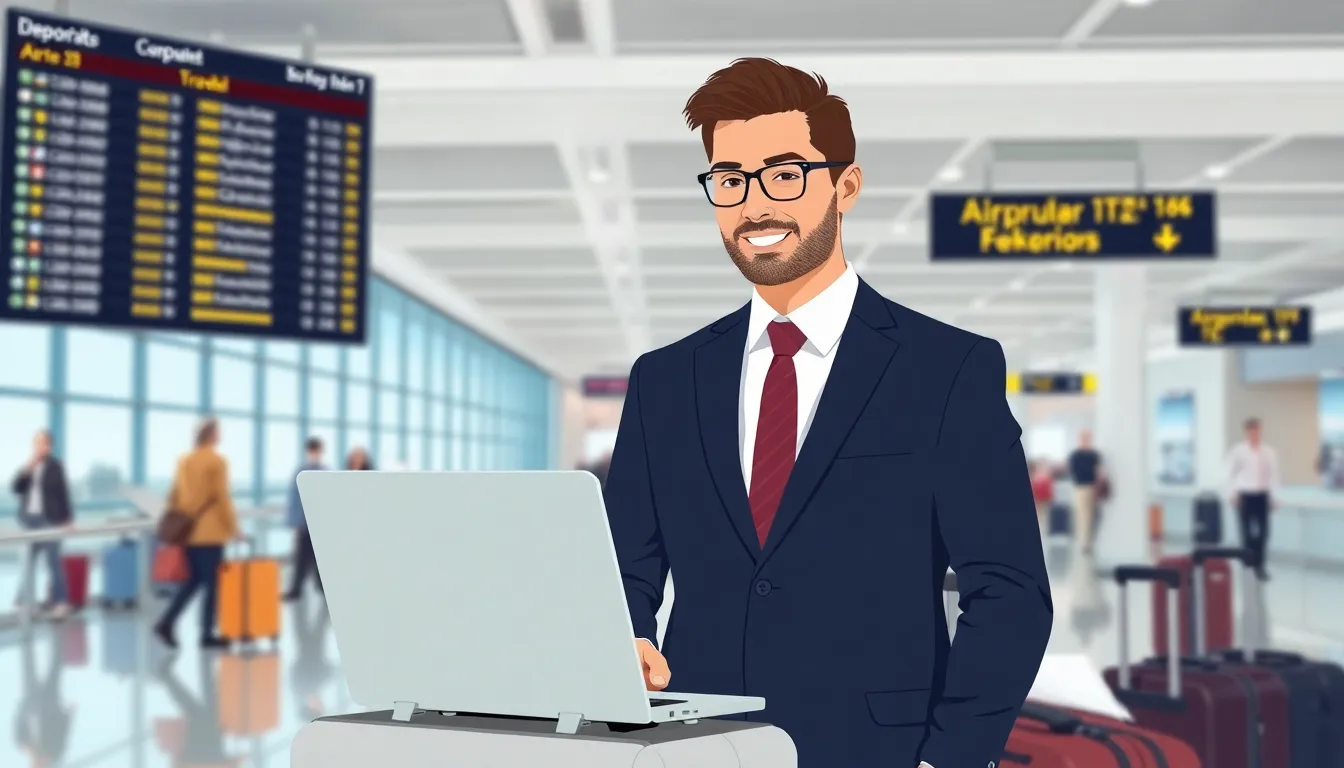In the fast-paced world of corporate travel, safety often takes a backseat to busy schedules and endless meetings. But let’s face it: no one wants to be the person who accidentally books a flight to the wrong city or, worse, finds themselves in a precarious situation. Corporate travel safety isn’t just a buzzword; it’s the unsung hero of successful business trips.
Imagine navigating bustling airports and unfamiliar cities without a safety plan. It’s like trying to juggle flaming swords while riding a unicycle. With a little preparation and the right strategies, professionals can minimize risks and keep their focus on what really matters: closing deals and impressing clients. So buckle up as we dive into the essentials of corporate travel safety, ensuring that every trip is not just productive but also worry-free.
Table of Contents
ToggleUnderstanding Corporate Travel Safety
Corporate travel safety is crucial for professionals navigating busy schedules and multiple commitments. Prioritizing safety ensures that business objectives remain the focus during travel.
Importance of Corporate Travel Safety
Corporate travel safety protects employees and reduces liability for organizations. Ensuring safety enhances productivity, enabling professionals to engage in their work without distractions. Companies demonstrate care for employee well-being by implementing comprehensive safety measures. Improved morale results from a secure travel environment, leading to increased employee retention. Additionally, businesses can safeguard their reputation by maintaining a commitment to travel safety.
Common Risks in Corporate Travel
Common risks in corporate travel include transportation issues, health concerns, and security threats. Delayed flights or lost luggage can disrupt schedules and impact meetings. Travelers face potential illness from unfamiliar environments or exposure to local diseases. Security threats, such as theft or violence, pose significant risks in certain regions. Weather changes may also threaten travel plans, altering itineraries unexpectedly. Awareness of these risks prepares travelers to respond effectively to challenges and maintain focus on their objectives.
Pre-Trip Planning

Pre-trip planning is vital for ensuring corporate travel safety. This phase allows professionals to address potential risks effectively before embarking on their journey.
Risk Assessment and Management
Conducting a thorough risk assessment helps identify potential hazards. Recognizing issues such as transportation delays, health risks, and security threats sets the stage for creating a management plan. Engage with reliable local contacts to gather pertinent information about the destination. Evaluate travel itineraries for potential disruptions that may arise. Prioritizing the development of contingency plans becomes essential, as these provide clear steps to take in the face of unexpected events. Effective risk management not only boosts confidence but also enables travelers to maintain focus on business objectives.
Health and Safety Protocols
Health and safety protocols significantly contribute to traveler well-being during corporate trips. Confirm vaccination status and adhere to health guidelines specific to the destination. Familiarity with local healthcare facilities and emergency contacts proves invaluable in uncertain situations. Confirm safety measures provided by hotels and transportation services to mitigate risks. Reviewing personal health insurance coverage ensures that adequate protection is in place. Prioritize maintaining hygiene practices, especially in unfamiliar environments, to minimize health risks. Committing to these protocols creates an atmosphere where professionals can remain productive and stress-free.
Safety During Travel
Ensuring safety during travel requires thorough attention to detail and proactive measures. Awareness of surroundings plays a crucial role in preventing risks.
Choosing Safe Accommodations
Select accommodations that prioritize security and hygiene. Look for hotels that implement strict safety protocols, such as key card access and security personnel. Research reviews and ratings from other travelers to gauge the safety of the location. Proximity to emergency services and reputable transport options enhances safety. Confirm that the hotel has clear emergency procedures in place. Trusting well-known hotel chains typically offers added peace of mind.
Transportation Safety Measures
Implement safe transportation practices to mitigate risks while traveling. Use reliable ride-sharing services, or opt for reputable taxi companies. Always confirm the driver’s identity before entering a vehicle. When possible, schedule transportation through the hotel to ensure safety and reliability. Plan routes in advance and share travel details with a trusted contact. Avoid traveling alone during late hours to reduce vulnerability. Regularly check local news for updates on safety conditions in the area.
Technology and Corporate Travel Safety
Technology plays a significant role in enhancing corporate travel safety. Innovative tools enable professionals to address potential risks effectively during trips.
Utilizing Travel Safety Apps
Travel safety apps offer essential features for managing risks. These applications provide immediate access to safety information, emergency contacts, and real-time alerts. Frequent travelers benefit from data on local security situations, allowing them to avoid dangerous areas. Additionally, some apps enable users to share their itineraries with trusted contacts for added security. These tools empower employees to travel confidently while minimizing exposure to unforeseen threats.
GPS and Real-Time Tracking
GPS technology and real-time tracking significantly enhance travel safety. Instant location sharing allows corporate travelers to keep colleagues informed of their whereabouts. This capability assists in quickly finding individuals in emergencies, decreasing response times. Moreover, real-time navigation helps avoid high-risk zones, ensuring safer routes during travels. Employers can use tracking tools to monitor employee safety, providing peace of mind and fostering a secure travel environment. By leveraging GPS and tracking technology, organizations can effectively prioritize traveler safety.
Crisis Management
Crisis management enhances corporate travel safety by ensuring preparedness for emergencies. A well-structured approach minimizes risks and protects employees during unexpected events.
Developing a Travel Emergency Plan
Creating a travel emergency plan proves vital for professionals on business trips. Essential elements include a clear chain of command, accessible emergency contacts, and a robust evacuation strategy. Regularly reviewing this plan enhances familiarity, ensuring team members understand procedures. Mapping nearby hospitals and emergency services in advance contributes to swift responses. In addition, conducting training sessions enables employees to simulate emergency scenarios, increasing confidence in their reactions. Incorporating technology, such as mobile apps with emergency resources, streamlines access to critical information on the go.
Communication Strategies During Emergencies
Effective communication during emergencies significantly impacts the overall safety of corporate travelers. Establishing designated communication channels allows for immediate updates and instructions. Utilizing messaging apps or text alerts ensures everyone stays informed. Maintaining an updated contact list helps facilitate rapid outreach to team members and organization leaders. During crises, assigning team members to specific communication roles preserves order and clarity. Regular check-ins, especially in high-risk regions, foster accountability while minimizing panic. Integrating tracking technology also benefits transparency, allowing organizations to locate employees and assess their safety in real-time.
Prioritizing corporate travel safety is essential for fostering a productive environment. By implementing effective strategies and proactive measures, organizations can significantly reduce risks and enhance employee well-being. This commitment not only protects travelers but also supports overall business objectives.
With the right planning and resources, professionals can navigate the complexities of travel with confidence. Embracing technology and crisis management practices further strengthens safety protocols. Ultimately, a focus on corporate travel safety cultivates a culture of care, ensuring that employees feel secure and valued while on the road.



